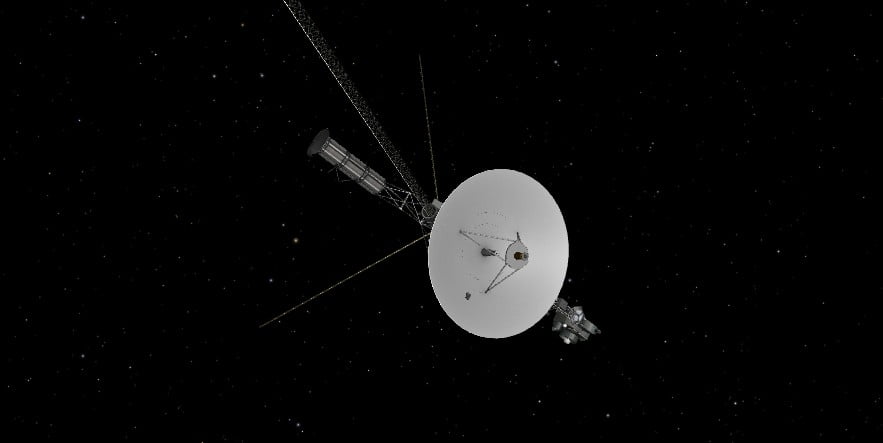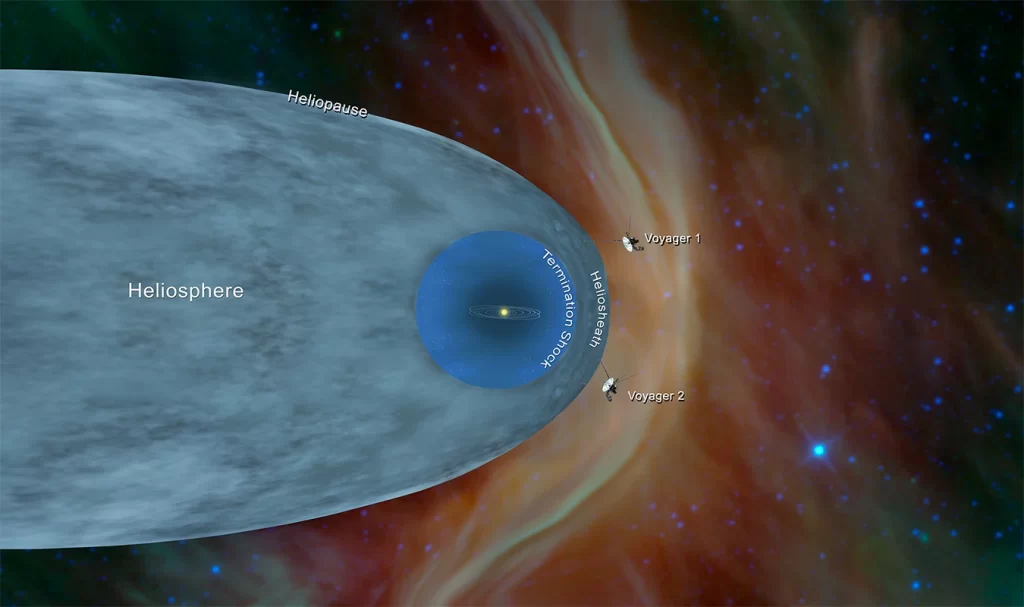Unexpected signals from Voyager 1 baffle engineers after 46 years of service

Over four decades after its launch and more than 24 billion km (15 billion miles) away from Earth, Voyager 1’s journey took an unexpected turn in November 2023 when it started sending back incomprehensible signals from the edge of the solar system, sparking concern and curiosity among the team at NASA.
Before encountering its recent communication malfunction, Voyager 1 had amassed a remarkable list of achievements that have significantly expanded our understanding of the outer solar system and interstellar space.
Launched on September 5, 1977, and powered by a radioisotope thermoelectric generator, Voyager 1’s primary mission was to provide detailed images and data about Jupiter, Saturn, and their moons. It achieved this goal with groundbreaking results, including the discovery of active volcanoes on Jupiter’s moon Io—the first time active volcanoes had been observed on another body in the Solar System—and detailed observations of the complex rings and moons of Saturn. Voyager 1’s imaging of Titan, Saturn’s largest moon, revealed a thick, opaque atmosphere, sparking further interest and study.
After completing its primary mission, Voyager 1 continued to journey toward the edge of our solar system and on February 14, 1990, at a distance of 6 billion km (3.7 billion miles) from Earth, it turned its camera around and captured the iconic “Pale Blue Dot” photo of Earth, showing Earth as a tiny dot against the vastness of space and inspiring Carl Sagan’s 1994 book, Pale Blue Dot: A Vision of the Human Future in Space.
Voyager 1 entered interstellar space in August 2012, becoming the first human-made object to do so. This achievement provided scientists with invaluable data on the nature of the heliosphere’s boundary and the environment of interstellar space, including the detection of interstellar plasma and magnetic fields.

One of the people who has been involved with the spacecraft’s mission since its inception is Stamatios “Tom” Krimigis, who still oversees one of its still-active instruments.
Krimigs expressed his astonishment at the spacecraft’s longevity but his astonishment turned into concern in mid-November 2023 when Voyager 1’s transmissions became a stream of nonsensical 1s and 0s, indicating a potential malfunction akin to a “cosmic stroke” that has impaired its communication capabilities.
Suzanne Dodd, the project manager for the Voyager interstellar mission at NASA’s Jet Propulsion Laboratory, described the situation as a “serious problem,” highlighting the difficulties in diagnosing and fixing issues on a spacecraft so far from home.
The problem appears to be with the onboard computer responsible for packaging and sending data back to Earth, a system with less computing power than a modern car’s key fob. As a result, no science or engineering data is being sent back to Earth.
In an effort to solve this enigma, Dodd’s team has been delving into archival documents and consulting with the original engineers, attempting to understand the spacecraft’s design choices and explore potential fixes. This task is daunting, not only because of the aged technology but also due to the immense distance between Voyager 1 and Earth, which means any signal takes almost a day to travel each way.
Astronomers like Stella Ocker, who rely on data from Voyager 1 to study the interstellar medium, now face setbacks in their research due to the absence of new information since the anomaly began.
Despite the challenges, the team remains cautiously optimistic about restoring coherent communication with Voyager 1. With the spacecraft’s power supply dwindling, they are aware that time is of the essence to continue its mission.
In the coming years, the spacecraft is expected to gradually lose the ability to power its instruments, eventually becoming a piece of “space junk” adrift in the cosmos, carrying a golden record of Earth’s greetings and sounds into the unknown.
References:
1 NASA’s Voyager 1 spacecraft is talking nonsense. Its friends on Earth are worried – NPR – March 6, 2024
2 Engineers Working to Resolve Issue With Voyager 1 Computer – NASA/JPL – December 12, 2024
3 Voyager Mission Overview – NASA/JPL – Accessed March 9, 2024
Featured image credit: NASA/JPL-Caltech

Home sickness